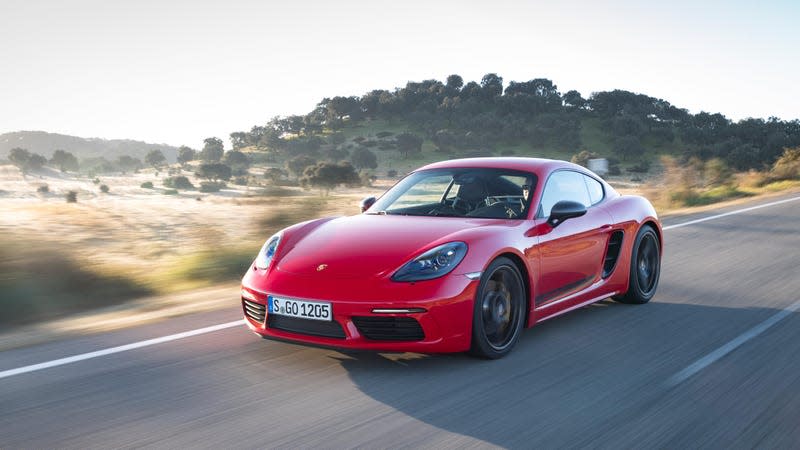Mitsubishi Mirage Has A More Responsive Engine Than Porsche Cayman: Car And Driver

The ubiquitous 0-to-60 test has become a standardized measure of a vehicle’s performance chops among industry pros and car meet aficionados, but that singular measurement doesn’t paint the full picture of a car’s character. On the road and even on the race track it’s more likely that a car’s 5-to-60 mile per hour results, or rolling start results, reveal more about a cars real-world performance. In a recent study, Car and Driver compared vehicles’ 0-to-60 mph times and 5-to-60 mph times to determine which cars had the least difference between the two results, and thus the most responsive powertrains, and the reverse.
Despite holding the crown for slowest new car on sale today, the 2017 Mitsubishi Mirage G4 actually completed the 5-to-60 mph test a tenth of a second faster than it completed the 0-to-60 mph run. The 2018 Honda Odyssey matched the Mirage’s delta, making them the two most responsive powertrains that Car and Driver has tested. The actual time each car took to reach 60 mph varied greatly, with the Mirage posting a 0-to-60 time of 12.8 seconds and a 5-to-60 time of 12.7 seconds, while the Odyssey posted a 0-to-60 time of 6.7 seconds and a 5-to-60 time of 6.6 seconds.

The cars with the least responsive powertrains are not the culprits you might expect. The car with the least responsive powertrain is the 2020 Porsche 718 Cayman T with a two second difference between its 0-to-60 time of 4.4 seconds and its 5-to-60 time of 6.4 seconds. After that is the 2020 BMW M235i xDrive Gran Coupe with a 1.8-second delta between its 0-to-60 time of 4.2 seconds and its 5-to-60 time of 6 seconds. Car and Driver said,
It’s not a shock that the least responsive powertrains are all turbocharged. The worst performer was the Porsche 718 Cayman T, which packs a high-boost turbo 2.0-liter flat-four engine. The 2020 manual-equipped model we tested did the 60-mph launch in 4.4 seconds but was a full two seconds behind on the 5-to-60-mph run. Other laggy engines included a 2020 BMW M235i xDrive Gran Coupe and a 2018 Land Rover Range Rover Velar P250 SE, both of which had a 1.8 second difference between the 60- and 5-to-60-mph times.
A leisurely response is certainly not limited to slow vehicles. A four-door 2021 Ford Bronco Outer Banks needed 8.2 seconds to go from 5-to-60 mph, 1.7 seconds off its 60-mph time. But a 2024 Porsche Cayenne Coupe Turbo GT experienced the same delta, needing 4.5 seconds on the 5-to-60-mph test versus its ballistic 2.8-second sprint to 60 mph.
Not all turbocharged cars performed poorly in the rolling start runs, though. There were 10 turbocharged models that had a delta of less than three tenths of a second between the two test results. All of the cars that had the smallest delta between the tests were naturally aspirated, though, leading Car and Driver to conclude that modern turbocharged engines still don’t provide the same linear power curve as their naturally aspirated counterparts.
As with the understanding that the weight the world has placed on 0-to-60 times only addresses a singular aspect of a car’s performance chops, the 5-to-60 rolling start results also focus on a single metric, and doesn’t paint a full picture. Comparing both measurements illustrates an interesting point, but these results don’t tell us much about the vehicles tested aside from their performance in these two tests. That said, I am shocked by the massive huge delta between the Porsche 718 and the Cayenne Coupe Turbo GT. The 718 is about 45 percent slower in the rolling test than the 0-to-60 run, and the Cayenne Coupe Turbo GT is over 60 percent slower in the rolling race. Given Porsche’s pedigree and reputation, I wasn’t expecting such huge performance gaps, but again, Porsches have always been about more than straight line speed.

 Yahoo Autos
Yahoo Autos 